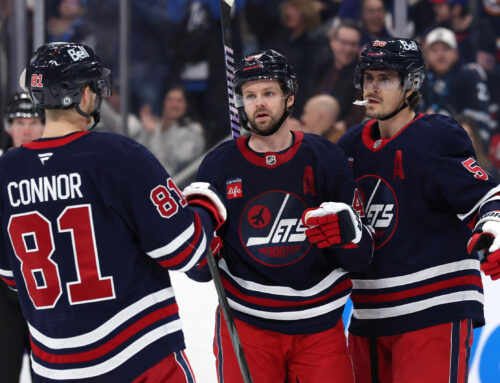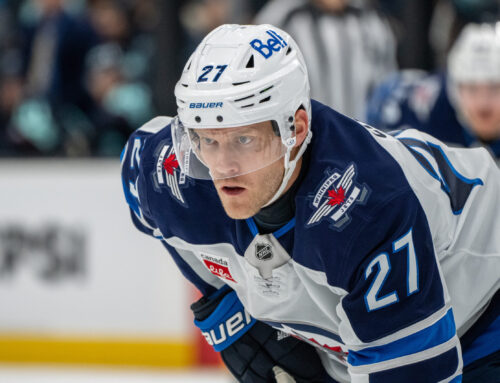
Libin lists his expected breakout players from the Western Conference for the 2015-16 NHL season…
Picking a breakout player before the season can have a tremendously positive effect on a team’s fantasy season. First, getting a player before they break out allows one to acquire said player for a cheaper price and derive value from the acquisition. That value could be based on a much lower draft position or a significantly lower cost of acquisition via trade. The trick is identifying the players that not only look like they are ready t break out, but actually will. The following are four players who fit the first criteria, being ready to break out, barring possession of a crystal ball the second part you will have to wait for.
Breakouts
Nail Yakupov – Forward, Edmonton
Yakupov has seemed like a bit of bust since putting up 31 points in 48 games in his rookie season. In the two years since he has struggled to match his total production from that season over 80 games, never mind in the 48 games of the lockout season. There are numerical reasons to like Yakupov this season but the big reason is a sneaking suspicion that he will lineup alongside Taylor Hall and Connor McDavid on the Oilers’ first line. As much as Yakupov appeared to find chemistry last year with Derek Roy this is a massive upgrade in the level of talent with which Yakupov will be skating. Better linemates make it significantly easier to put up higher point totals and with Yakupov having turned his game around last year this is the perfect time for him to slot in alongside high end linemates.
There are a number of ways that playing with McDavid and Hall will help Yakupov. First, last season Yakupov had an on-ice shooting percentage of 7.7% and similarly a low PDO of 96.9. Playing with better talent should raise Yakupov’s on-ice shooting percentage as better players score on more of their shots. For example, before last year’s abnormally low shooting percentage Hall could be counted on to score on 10% of his shots. Secondly, Yakupov has been trending in the right direction in terms of his shooting as he took close to 2.5 shots per game. As McDavid figures to be at worst a high-end distributor that should make it easier for Yakupov to get his shot. Add that to Hall traditionally generating three shots per game, meaning that this should be a line that generates shots by the boat load. The sheer number of shots combined with linemates who raise his on-ice shooting percentage, and probably his shooting percentage as well, should bump Yakupov’s production significantly. If Yakupov was not behind four other forwards in the line for power play time something over 60 points would seem reasonable, as it is expect him to flirt with 50 to 55 points.
Jakob Silfverberg – Forward, Anaheim
Silfverberg established his spot in the Ducks’ lineup last spring during the playoffs as he put the offensive side of his game on full display. After spending most of last year on the third line with Andrew Cogliano in a defensive role Silfverberg finally got the chance to play on one of the Ducks two big scoring lines, in this case with Ryan Kesler. Silfverberg thrived in this new role to the tune of 17 points in 16 games. Playing in the top six means more minutes as well as significantly better linemates for Silfverberg. This is evident in the points per 60 minutes of Kesler (1.78), Beleskey (2.02) and Palmieri (2.16) versus Cogliano (0.71) and Rakell (1.48).
There is a huge difference between playing on the second line and the third line as Silfverberg saw his minutes rise from 15 minutes per game with Cogliano to 19 minutes per games with Kesler. Even with the playoff ice time bump for top players that still translates to Silfverberg seeing an extra three minutes of ice time per game. To that end Silfverberg and Kesler produced at the same points per 60 rate last year, yet Kesler finished with close to 50 while Silfverberg was under 40. Similarly, Beleskey had five fewer points than Silfverberg last year in 16 fewer games based largely on playing in the top six and an insane shooting percentage. Based on the extra and minutes the aforementioned better linemates Silfverberg should break 50 points this year, basically mirroring Kesler’s levels of production.
Craig Smith – Forward, Nashville
There are a couple forwards that could fit in this spot from the Predators in Colin Wilson and Craig Smith. Not only are their point totals relatively similar but there is a good chance that they will play together for much of the season. The reason for picking Craig Smith to breakout over Colin Wilson is that Smith has established himself as a volume shooter. Last season he broke the three shots per game mark for the first time in his four year NHL career. He is on trend to keep shooting more and possibly even break the three hundred shot mark next season. Even approaching the three hundred shot mark is putting a player in company with the league’s elite, with Vrbata being the first less than elite player in the league’s top 10 players.
Last season Smith scored 22 goals with a shooting percentage under nine percent. Players in the top 20 shooters in the league tend to have higher shooting percentage, something similar to the 11% Smith sported in 2013/14. A similar shooting percentage last year would have seen Smith score 27 goals. Smith shot totals, as stated above, have been rising each year, as such if his shooting percentage rebounds there is no reason that he should not score 30 goals next season. Even without a rebound in his shooting percentage Smith should score 25 next based on his shooting patterns alone. Furthermore, last year saw Smith’s IPP fall from 54% to 40%, which is highly unusual for a player who is shooting at the volume that Smith does. Smith should break 50 points with the ability if everything goes well to threaten 60 points. The upper edge of that production would place him among the best wingers in the Western Conference.
Mikael Granlund – Forward, Minnesota
Granlund seems to have been in this position for a couple years now, with a breakout expected of him. Last year Granlund landed top ended wingers for the full season after having his linemates yo-yo sometimes from game to game the previous year. With Parise and Pominville being cemented as his wingers Granlund was finally skating on the Wild’s top line. While his production did not increase everything else is trending in the right direction for Granlund going forward. The next piece to fall in line for Granlund is a spot on the Wild’s top power play unit. That will become easier as Granlund now makes three million, so there is not that massive gap in salary between him and Koivu, and secondly something needs to change for the Wild as their power play last year was horrible. Even then his regular season numbers and what he showed last year shout a player ready to kick his production up to the next level.
When the Granlund line was on the ice last year for the Wild the team generated shots at an elite level with 35 shots per 60 minutes played. For Granlund that was a six shot per 60 minutes increase over the previous, that is basically an extra two shots per game by Granlund or one of his linemates. With Granlund sporting an on-ice shooting percentage of close to 10 percent that the line averages a goal per game. Granlund was involved in two third as many goals as his linemates Parise and Pominville despite often being involved in the plays, even as they gained the zone with control. Part of the problem is that he does not shoot enough, but that is a ridiculously low IPP. If his IPP is the neighbourhood of 50% Granlund would be on pace 60 points each season. Look for a minimum of 55 points from Granlund with a ceiling of 65 points with any significant power play time.





 FLA
FLA CHI
CHI NYR
NYR PIT
PIT L.A
L.A COL
COL MTL
MTL ANA
ANA STL
STL N.J
N.J VAN
VAN S.J
S.J
